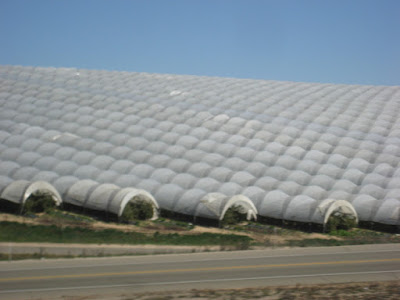Until
my wife got into Ancestry.com and began digging into our family history on my
father’s side, I never really thought about my grandparents and uncles out
there. They were all far removed from my life growing up and were never a blip
on my consciousness. It turns out, I had an uncle who lived in Montana most of
his life and ended up in Los Angeles and died there in 1973. For roughly thirty years, he knew he had a
nephew and niece in Minnesota but never made an effort to contact my sister or
me.
My
grandmother (on my father’s side) came to see my sister and me once when she
brought my stepsister along. I have no idea what happened to my grandfather on
that side of the family. I saw my step-sister one other time when I was six. So
much for that side of the family.
Unfortunately,
my grandfather on my mother’s side died seven years before I was born. That’s a
shame because he sounded like one hell of an interesting individual. I wrote
about him and my mother in another blog entitled: Hilde and the Old Man.
My
grandmother was around for a while after I was born. I’m told my mother took us
up to see her a few times in St. Martin, Minnesota. Obviously that made no
impression on me growing up. So I have no memory of either set of grandparents.
No relatives on my fathers’ side and only the most vapid of impressions and
memories of most of my uncles and aunts on my Mother’s side.
The
century-old pattern of ‘sending the grandchildren a birthday card with a dollar
inside’ continued with the next generation. Brian and Melanie have only a cursory
knowledge of my mother and step-father, not much better with Sharon’s parents.
Nothing of real depth or con-sequences. That’s unfortunate but certainly not
unique.
Thank
heavens, that behavior pattern on the part of grandparents has changed with my
generation. Nowadays they come in every size and shape and form. They’re
Catholics, Jews, Agnostics and non-believers. They’re Democrats, Republicans,
Independents and some not sure where they stand politically. Their names range
from the simple Nana and Papa (my personal favorite) to every creative moniker
under the sun.
But
the one thing that seems to unite most of them is their deep ongoing love of
their grandchildren and a strong desire to be an important part of their lives.
This new generation of grandparents are re-configuring and redefining their role
in their grandchildren’s lives. Many Boomers had a far different, much closer
bond with their own children than they had with their parents. Now they want to
continue that deep connection with the grandkids. Most want to leave this next
generation with memories and experiences rather than a pot of money; thank you
very much.
This
became abundantly clear to me during the recent COVID-19 outbreak. I heard over
and over again how our friends wanted to get back home or just spend time
with their grandchildren. In most instances, their own kids said: ‘Thanks but
no thanks, Mom and Dad. Stay in place and when the coast is clear of viruses,
you can see your grandchildren.’ To a person, we all ‘got it.’ Our
grandchildren’s health and welfare circumvented any desire we might have for those
little urchins wrapped in our arms. But it wasn’t always that way.
My
observations over the years paint a much different picture with our own parents
and grandparents. There are exceptions, of course, and a lot of our parents did
step up to the plate and baby-sit, house-sit, travel with us and overall become
a part of our children’s lives as they were growing up. But from talking to
friends over the years, I’ve become convinced that those grand- parents were
the exception rather than the norm. I grew up hearing a simple mantra:’
Children should be seen and not heard.’ In other words, those little people
weren’t worth conversing with until they reached their teen’s years or even
beyond.
Every
situation is different but I’m sensing that what I experienced is probably more
common than not. To put it in the proper perspective, our parents and
grandparents grew up in a world very different from the one we knew.
For
many, it began with the great depression, followed by World War 2 then Korea
for some and finally a seismic wave of cultural and social changes beginning in
the 1960s. But there was something more subtle, more pervasive and more rigid
than the changes swirling around them. It was a cultural and social phenomenon
that didn’t see little children as anything more than farm help, kitchen help,
church servants and a burden on family finances until they could earn their
keep. It was an attitude passed down from one generation to the next for a long
time. It was what our parents and grandparents understood and quietly accepted.
For
the most part, that’s changed now. The new norm is grandparents babysitting,
grandparents on trips accompanied by their grandchildren, and grandparents
becoming an integral of the little urchins’ lives. I’m seeing a change with my
generation and I hope it gets passed down to the next one and the one after
that.
Every
kid deserves grandparents in their lives. Someone to teach them, spoil them and
fill in where the parents can’t or don’t or won’t. What a wonderful experience
for both parties.
Sharon
and I are very lucky that way. I’d say our grandchildren are too.



































































